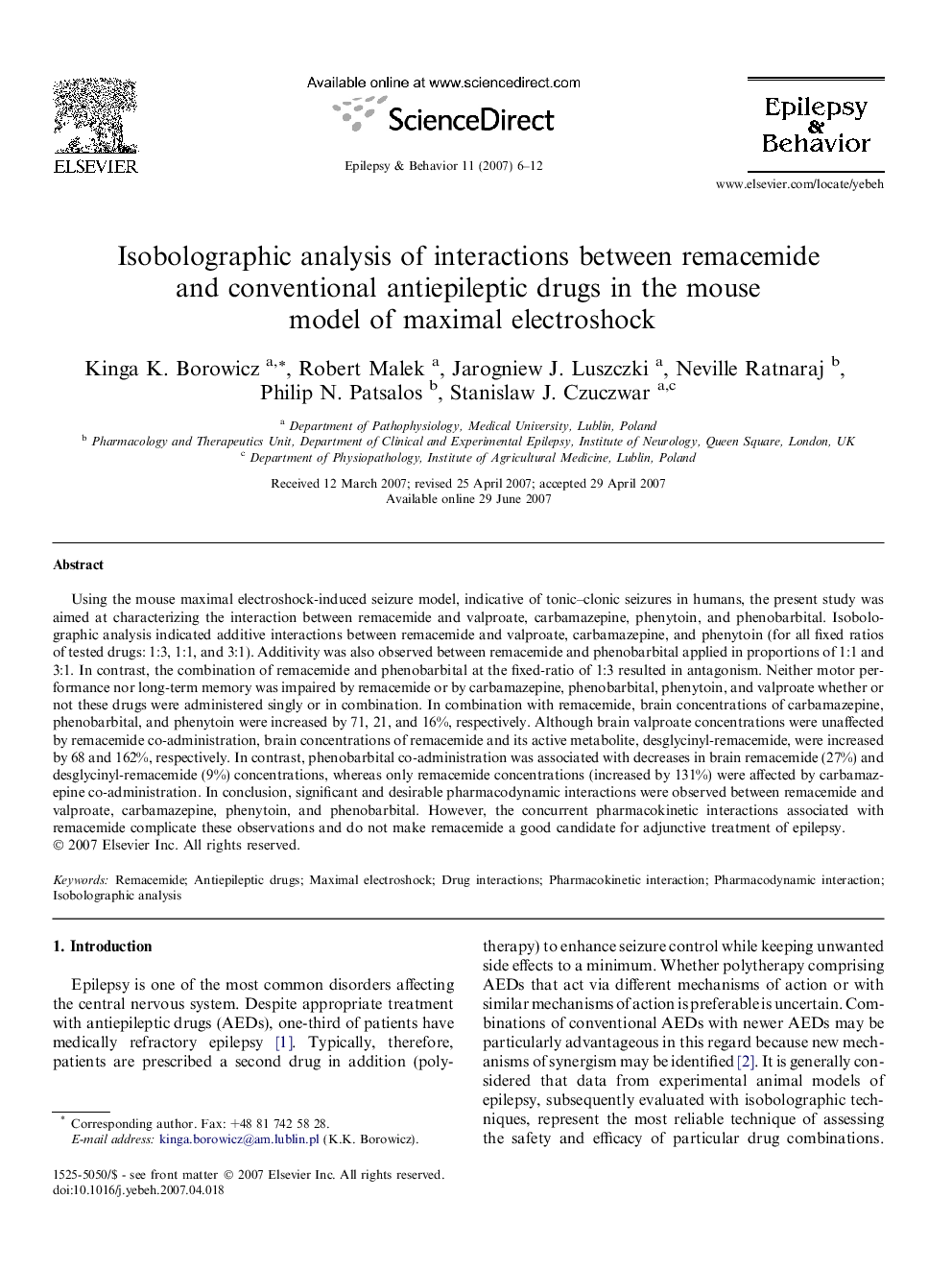| Article ID | Journal | Published Year | Pages | File Type |
|---|---|---|---|---|
| 3050898 | Epilepsy & Behavior | 2007 | 7 Pages |
Using the mouse maximal electroshock-induced seizure model, indicative of tonic–clonic seizures in humans, the present study was aimed at characterizing the interaction between remacemide and valproate, carbamazepine, phenytoin, and phenobarbital. Isobolographic analysis indicated additive interactions between remacemide and valproate, carbamazepine, and phenytoin (for all fixed ratios of tested drugs: 1:3, 1:1, and 3:1). Additivity was also observed between remacemide and phenobarbital applied in proportions of 1:1 and 3:1. In contrast, the combination of remacemide and phenobarbital at the fixed-ratio of 1:3 resulted in antagonism. Neither motor performance nor long-term memory was impaired by remacemide or by carbamazepine, phenobarbital, phenytoin, and valproate whether or not these drugs were administered singly or in combination. In combination with remacemide, brain concentrations of carbamazepine, phenobarbital, and phenytoin were increased by 71, 21, and 16%, respectively. Although brain valproate concentrations were unaffected by remacemide co-administration, brain concentrations of remacemide and its active metabolite, desglycinyl-remacemide, were increased by 68 and 162%, respectively. In contrast, phenobarbital co-administration was associated with decreases in brain remacemide (27%) and desglycinyl-remacemide (9%) concentrations, whereas only remacemide concentrations (increased by 131%) were affected by carbamazepine co-administration. In conclusion, significant and desirable pharmacodynamic interactions were observed between remacemide and valproate, carbamazepine, phenytoin, and phenobarbital. However, the concurrent pharmacokinetic interactions associated with remacemide complicate these observations and do not make remacemide a good candidate for adjunctive treatment of epilepsy.
